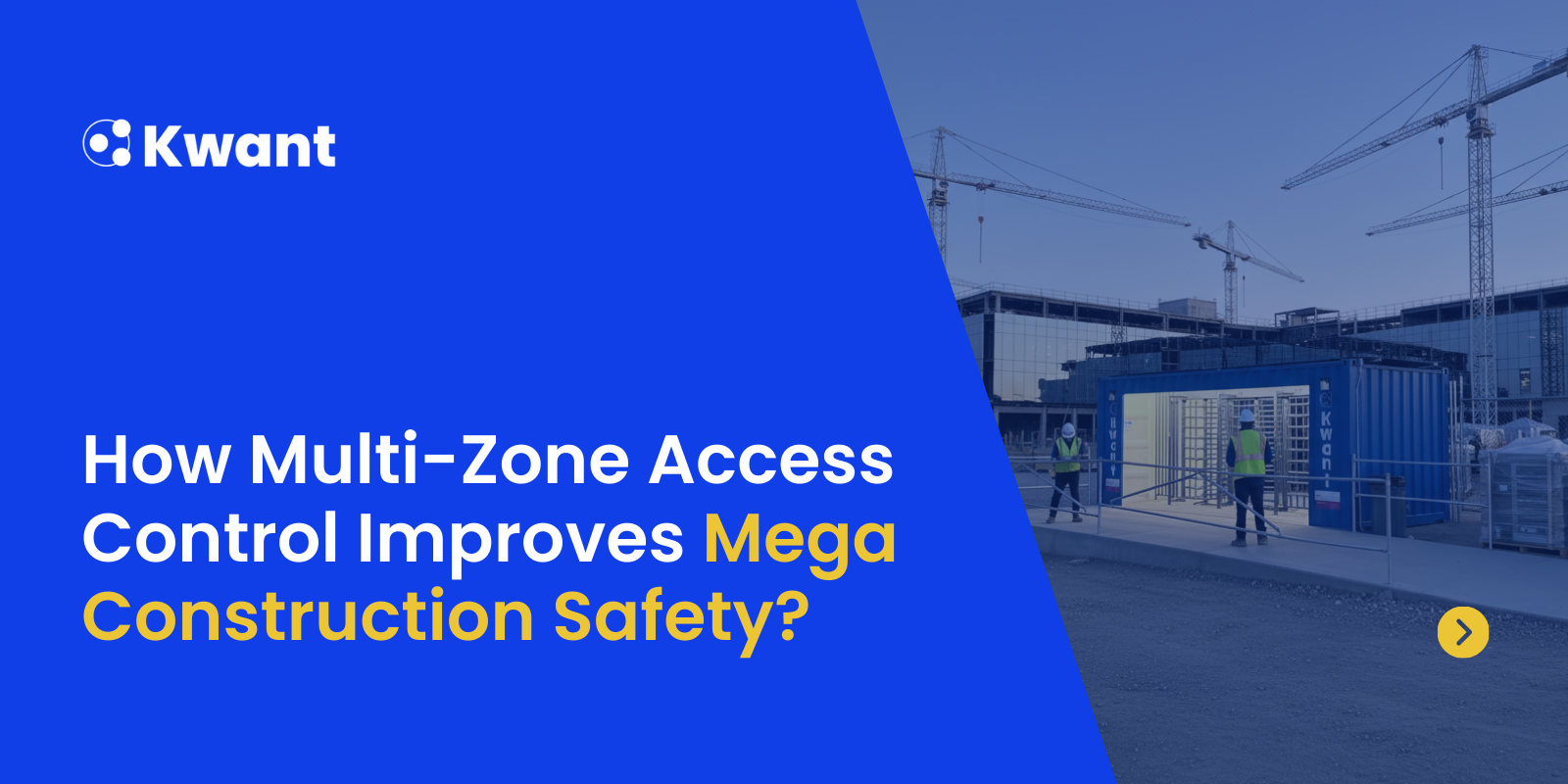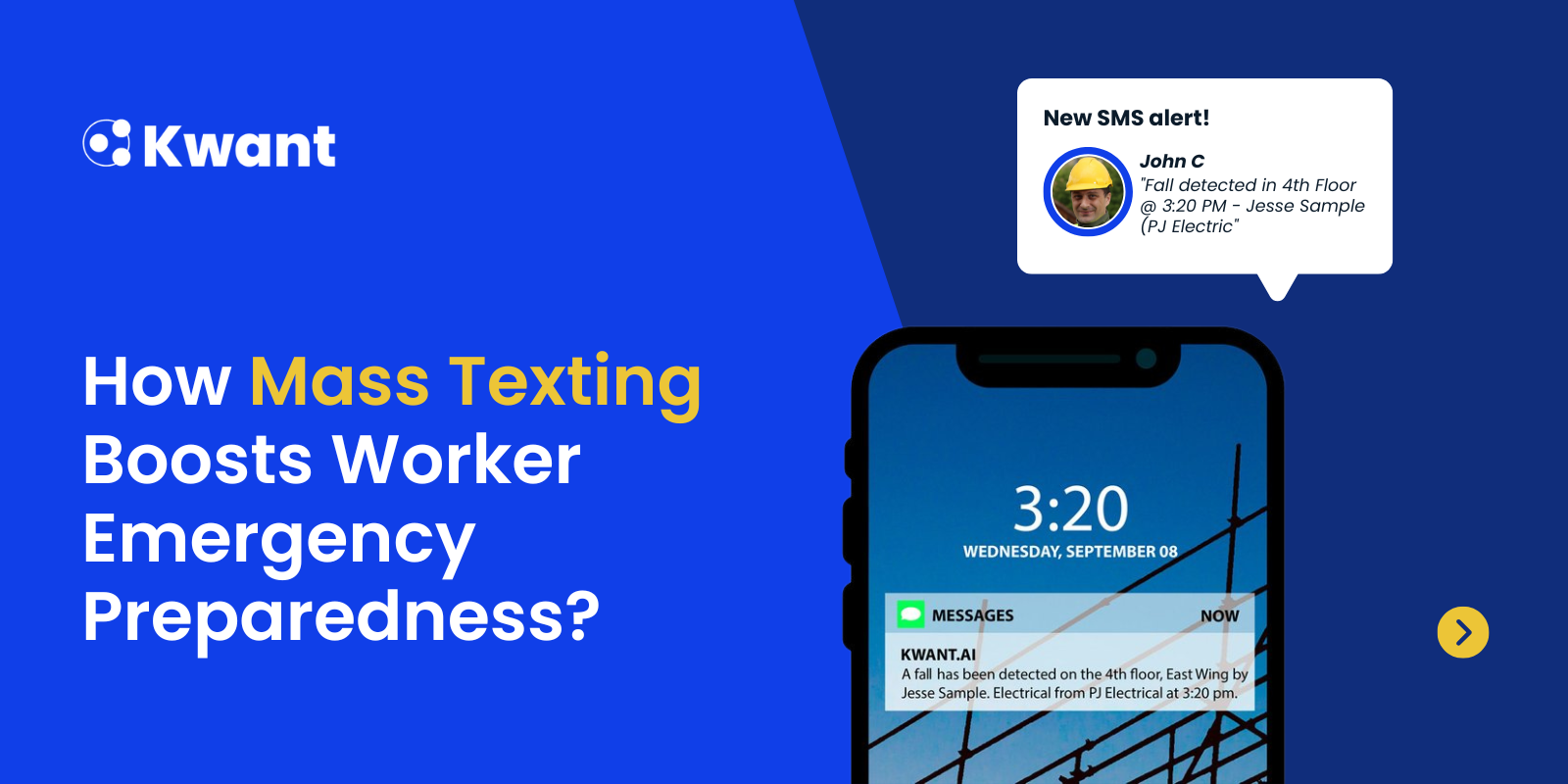Construction sites are dynamic and demanding workplaces. While the focus is often on project deadlines, budgets, and safety protocols, there's a critical element that can significantly impact all of these: the well-being of the workforce. Specifically, fatigue management is a growing concern, as it directly influences safety, productivity, and the overall health of construction workers in high-stress environments.
The Hidden Costs of Fatigue in Construction
When we talk about fatigue on a construction site, we're not just referring to feeling a bit tired. We're talking about a state of mental and physical exhaustion that impairs a worker's ability to perform tasks safely and effectively. The consequences can be severe:
- Increased Accident Risk: Fatigued workers have slower reaction times, reduced alertness, and impaired decision-making abilities, making them more prone to errors and accidents.
- Decreased Productivity: Exhaustion leads to a drop in focus and efficiency, slowing down project progress and potentially increasing labor costs.
- Higher Absenteeism and Turnover: Chronic fatigue can lead to health issues, increased sick days, and ultimately, workers leaving the industry.
- Lower Morale: A constantly fatigued workforce is often a less motivated and less engaged one, impacting team cohesion and job satisfaction.
Research from the National Safety Council (NSC) estimates that 13% of all workplace injuries can be attributed to fatigue. Fatigued workers have slower reaction times, reduced alertness, and impaired decision-making abilities, making them more prone to errors and accidents, especially in demanding construction environments.
Recognizing these risks is the first step. The next is implementing proactive strategies for construction fatigue tracking and mitigation.

Understanding the Sources of Fatigue
To effectively manage fatigue, it's essential to understand its root causes. In construction, these often include:
- Long Hours and Irregular Shifts: Extended workdays, night shifts, and demanding schedules can disrupt natural sleep patterns.
- Physically Demanding Work: Repetitive tasks, heavy lifting, and working in extreme weather conditions all contribute to physical exhaustion.
- Mental Strain: The constant need for vigilance, problem-solving, and adherence to strict safety regulations can lead to mental fatigue.
- Poor Sleep Hygiene: Factors outside of work, such as inadequate rest environments or personal stressors, can also contribute.

The Legal Imperative: OSH Act of 1970 and Fatigue Management
While the U.S. Occupational Safety and Health Act of 1970 doesn't contain a standalone standard dedicated solely to worker fatigue, it provides the fundamental legal framework that obliges employers to address it. At the heart of this obligation is the General Duty Clause, found in Section 5(a)(1) of the Act.
This crucial clause mandates that "Each employer shall furnish to each of his employees employment and a place of employment which are free from recognized hazards that are causing or are likely to cause death or serious physical harm to his employees."
How does this co-relate to fatigue management on a construction site?
- Fatigue as a "Recognized Hazard": Fatigue, particularly in high-stress, physically demanding environments like construction, is widely acknowledged by industry experts, safety organizations, and even OSHA itself, as a hazard. It impairs judgment, slows reaction times, reduces alertness, and increases the likelihood of errors and accidents – all of which can lead to serious injury or fatality. Numerous industrial incidents and disasters have highlighted fatigue as a contributing factor.
- "Causing or Likely to Cause Death or Serious Physical Harm": The direct consequences of fatigue on a construction site – falls from heights, equipment misuse, vehicular accidents, or errors in critical tasks – undeniably have the potential for severe physical harm or death.
- "Feasible and Useful Methods": To comply with the General Duty Clause regarding fatigue, employers are expected to implement feasible and useful methods to control this recognized hazard. This includes:
- Developing Fatigue Risk Management Programs (FRMPs): These are systematic approaches to identify, assess, and control fatigue risks.
- Optimizing Work Schedules: Designing shifts that allow for adequate rest breaks and sufficient recovery time between shifts, and carefully managing overtime.
- Workload Assessment: Ensuring that staffing levels and task assignments don't lead to excessive demands that induce severe fatigue.
- Providing Rest Environments: Creating designated, quiet, and comfortable areas where workers can genuinely recuperate during breaks.
- Comprehensive Training: Educating both workers and supervisors on the causes, signs, and consequences of fatigue, as well as personal strategies for managing it.
- Proactive Monitoring: Implementing systems, including modern technology, to track and identify workers at high risk of fatigue.
In essence, the OSHA Act of 1970, through its General Duty Clause, places a clear responsibility on General Contractors to actively prevent and manage worker fatigue. It underscores that failing to address fatigue risks could be considered a violation of the fundamental duty to provide a safe workplace, making effective fatigue management not just a best practice, but a legal imperative.
Proactive Strategies for Effective Fatigue Management
So, what can General Contractors do to manage fatigue and protect their teams? Here are some key strategies:
1. Implement Robust Fatigue Tracking and Monitoring
Effective construction fatigue tracking goes beyond simply asking workers if they're tired. It involves a systematic approach to identify patterns and potential risks. This can include:
- Analyzing Work Schedules: Are there extended periods of overtime or consecutive shifts without adequate rest?
- Monitoring Incident Reports: Do accidents or near-misses occur more frequently at certain times of day or after specific shift durations?
- Utilizing Technology: This is where modern solutions come into play, offering sophisticated ways to monitor and predict fatigue.
2. Prioritize Workforce Health Monitoring
A holistic approach to workforce health monitoring is crucial. This means looking at overall worker well-being, not just physical symptoms of fatigue. Consider:
- Regular Health Assessments: Encouraging and facilitating health check-ups can identify underlying health issues that might exacerbate fatigue.
- Promoting Healthy Lifestyles: Education on nutrition, hydration, and the importance of sleep can empower workers to take charge of their own health.
- Providing Rest Areas: Ensuring comfortable and quiet spaces for breaks allows workers to truly recuperate during their shifts.
3. The Role of AI in Worker Safety
This is where innovation truly shines. AI in worker safety is revolutionizing how we approach fatigue management. Artificial intelligence platforms can:
- Analyze Data Patterns: AI can process vast amounts of data from various sources – shift schedules, incident reports, even wearable technology (with proper consent and privacy safeguards) – to identify fatigue risks that might be invisible to the human eye.
- Predict Fatigue Hotspots: By recognizing patterns, AI can predict when and where fatigue-related incidents are most likely to occur, allowing for proactive interventions.
- Optimize Scheduling: AI can assist in creating more balanced work schedules that minimize fatigue risks while still meeting project demands.
- Provide Real-Time Alerts: In some advanced systems, AI can even provide real-time alerts to supervisors or workers themselves if fatigue levels become critical.
Implementing AI doesn't replace human oversight; rather, it empowers safety managers and site supervisors with data-driven insights to make more informed decisions and create a safer work environment.
Building a Culture of Well-being
Ultimately, effective fatigue management isn't just about implementing policies; it's about fostering a culture where worker well-being is genuinely valued. This means:
- Open Communication: Encouraging workers to report fatigue without fear of repercussions.
- Training and Education: Equipping workers and supervisors with the knowledge to recognize and manage fatigue.
- Continuous Improvement: Regularly reviewing and adjusting fatigue management strategies based on feedback and data.
Kwant AI’s fatigue management solution for construction leverages scheduling data, real-time insights, and wearable tech to predict and prevent worker fatigue before it becomes a safety risk. The platform allows teams to:
- Establish fatigue thresholds based on legal or internal guidelines (e.g., hours worked per day/week) and continuously monitor schedules across all projects.
- Flag at-risk workers in real time, sending alerts when schedules show excessive hours or extended exposure to demanding conditions.
- Enable proactive interventions, such as recommending breaks or schedule adjustments to prevent incidents.
- Optimize workforce scheduling, balancing coverage and fatigue management while ensuring compliance and efficiency.

Acting as part of Kwant’s WorkforceOS platform, fatigue management becomes a data-driven feedback loop: it informs better scheduling, enforces fatigue policies, keeps operations compliant, and ultimately enhances safety, productivity, and worker well-being.
Ready to improve safety and performance on your site? Schedule a demo to see Kwant’s fatigue management in action.
.svg)

.webp)









%20(1).svg)














